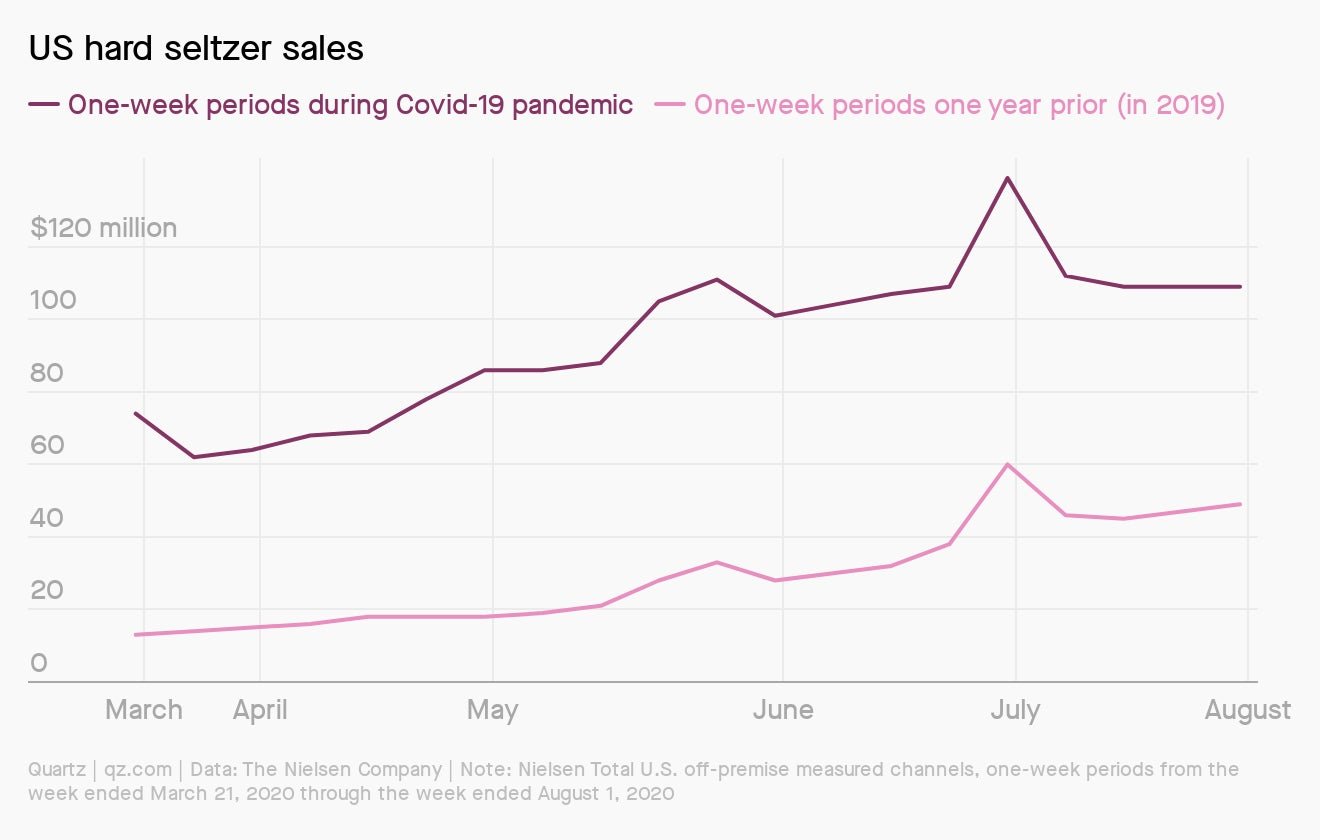Coronavirus: Trillions
Hello Quartz readers,

Hello Quartz readers,
On Monday, nearly every US state filed a joint claim in the bankruptcy proceedings for Purdue Pharma, maker of OxyContin. The filing asserts that opioid manufacturers have cost the American economy $2.2 trillion, a financial toll that includes treatment and healthcare costs, financing for the criminal justice system, lost business revenue, and victims’ lost economic potential.
While it remains to be seen how much states actually recover from Purdue, the staggering figure is a reminder of the consequences of inaction in the face of a health crisis—opioid addiction caused 67,000 US deaths in 2018—and the scale of an epidemic that, like everything else, has been exacerbated by Covid-19. Support networks are less accessible. Harm reduction services, such as needle exchanges, are closed. Opioid overdoses are up, opportunities for treatment fewer, and research is all but halted.
But it’s not all bad news. Let’s get started.
One day at a time
Opioid addicted patients being treated with methadone typically receive daily doses at the nearest clinic. It’s a practice “predicated on the belief that…if the patient is given more than the daily doses, they’ll overdose,” says Nora Volkow, director of the National Institute on Drug Abuse. Patients can progressively acquire “bottle privileges,” or the ability to take home extra bottles of methadone and reduce in-person visits. But it’s a protracted process, requiring at least two years to build up to a one-month supply.
Then came Covid-19. Almost overnight, the pandemic required a way to continue treatment while drastically reducing the number of people visiting clinics each day.
In March, federal guidelines were adjusted: Stabilized patients can now receive a 14-day or 28-day course of medication to take home. And for the first time, buprenorphine, one of the medications used to treat opioid addiction, can be prescribed through remote visits. Both changes dramatically expand the availability of treatment, particularly in rural areas where opioid addiction disorder is more prevalent and providers are scarce.
But perhaps the most important piece of pandemic-enabled progress: Covid-19 is indirectly helping doctors and healthcare providers de-stigmatize opioid addiction treatment. “That has been one of our arguments,” says Volkow, “that we basically want to address addiction like other diseases, we cannot just be treating it completely differently.”
There are challenges, of course, including the loss of structure and scrutiny provided by in-person visits. There is the risk of prescription misuse—not every recovering addict is ready for take-home bottles—and of “diversion,” or patients giving their methadone to others. But the potential upsides are huge.
Requiring patients to get to a methadone clinic daily can make it difficult for them to thrive, as such visits can be logistically challenging and easily interfere with work schedules or personal plans. Freeing people from that obligation increases retention of patients, because the barriers to treatment are lower and it becomes harder to miss doses.
Kenneth Morford, an assistant professor of medicine at Yale who specializes in opioid addiction treatment in his clinical practice, says the new guidelines also help family members warm up to the idea of methadone. “One of my patients said, ‘It’s so nice to be able to have take-home bottles,’” Morford told Quartz, “‘because now it feels like another prescription.’”
Heads down
Medical experts predicted that Covid-19 would prompt a mental health crisis. A new report from the CDC shows they were right.
One-fourth of US adults between the ages of 18 and 24 said they had considered suicide in the past 30 days, according to an online survey of 5,412 adults administered by Qualtrics in late June. A similar percentage said they’d started to use or increased their consumption of substances as a way of coping, and roughly half reported experiencing symptoms of anxiety and depression.
The survey is a stark reminder of how important it is that the public health response to Covid-19 prioritize emotional wellbeing, a subject we explored in a recent field guide. Here’s what we looked at:
- Covid-19 is creating a hidden mental health crisis
- Will employers provide mental healthcare for essential workers?
- The pandemic sparked a mental health reckoning in Africa
- Teletherapy is finally here to stay
A package deal
Groceries and cleaning supplies aren’t the only things Amazon is selling during the pandemic. The e-commerce giant is peddling plenty of advertising space to companies hoping to give their items prime placement in front of its legions of shoppers.
“Retail media—which, in its simplest form, refers to digital ad placements on eCommerce websites bought by consumer goods brands to influence the customer at the point of purchase—is booming during the pandemic,” market research firm Forrester said in a recent report. “In fact, Amazon’s advertising revenue didn’t miss a beat in Q2, growing at 41% year over year, while Facebook recorded its slowest ad revenue growth since going public and Google’s ad revenue declined for the first time ever.”
Amazon doesn’t report advertising revenue separately, but it does report “other” sales that it says “primarily includes sales of advertising services.” In the quarter ending June 30, “other” sales jumped to $4.2 billion.

We go hard
At least one thing about this year is just like last year: Hard seltzer—a.k.a. spiked sparkling water—is still Americans’ alcoholic beverage of choice. During the 15-week “pandemic period” ending June 13, sales of hard seltzer quadrupled over 2019, according to Nielsen data. In the same period, beer sales were up 11%.

Nielsen reports that hard seltzer brands unaffiliated with big beer labels—including White Claw and Truly—control about 75% of the market, but major players are coming quick. Bud Light Seltzer and Corona Seltzer both launched in 2020, and in July Coca-Cola announced that spiked Topo Chico is coming to select Latin American markets.

Essential reading
- The latest 🌏 figures: 21.9 million confirmed cases; 13.9 million classified as “recovered.”
- Driving sales: Covid-19 is giving India’s pre-owned car market a jumpstart.
- Job well done: Most out-of-work Americans do not expect to return to their old jobs.
- No returning back: There’s one silver lining for fashion retailers these days.
- Sink or sing: These karaoke superfans are desperate for its return.
Our best wishes for a healthy day. Get in touch with us at [email protected], and live your best Quartz life by downloading our app and becoming a member. Today’s newsletter was brought to you by Annalisa Merelli, Sarah Todd, Marc Bain, Jenni Avins, and Kira Bindrim.